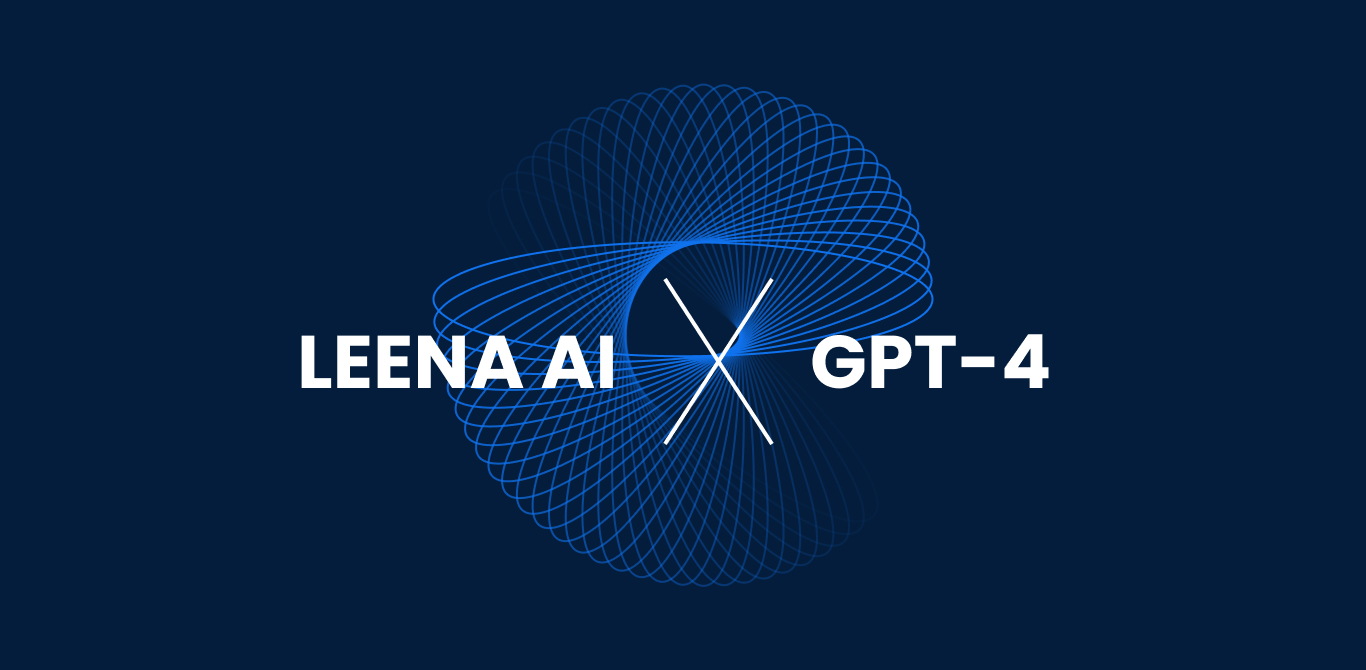Introduction:
In today’s fast-paced IT world, efficiency and productivity are critical to success. IT teams are constantly challenged to manage complex tasks, troubleshoot problems, and provide timely support to end users. The introduction of an enterprise chatbot like GPT-4, the most recent iteration of OpenAI’s powerful language model, has provided new opportunities for IT teams to improve their performance and streamline their workflows. In this blog, we will look at what this generative AI-powered, enterprise chatbot is capable of and how it can help IT teams function more effectively as a standalone product. We will also review a list of ready-to-use prompts for various IT-related roles, allowing IT professionals to use GPT-4 in their day-to-day operations.

What is GPT-4?
GPT-4, or Generative Pre-trained Transformer 4, is a cutting-edge language model developed by OpenAI. It builds upon the success of its predecessors, GPT-2 and GPT-3, and offers even more advanced capabilities in generating human-like text. GPT-4 is trained on vast amounts of data from the internet and is capable of understanding and generating text in a wide range of domains, including IT.
How GPT-4 Can Help IT Teams Function Better:
As a standalone chatbot for enterprise, GPT-4 can be a valuable tool for IT teams in various ways:
 Enhanced Troubleshooting:
Enhanced Troubleshooting:
IT teams can leverage enterprise chatbot prompts to generate troubleshooting guides and step-by-step walkthroughs for resolving complex technical issues. GPT-4 can analyze the symptoms, identify potential causes, and provide detailed solutions, helping IT professionals save time and effort in diagnosing and resolving problems.
 Automating Tasks:
Automating Tasks:
GPT-4 can be used to generate scripts for automating repetitive tasks, such as server provisioning, software installation, and configuration management. This can help IT teams streamline their workflows, reduce human error, and improve overall operational efficiency.
 Knowledge Base Creation:
Knowledge Base Creation:
IT teams can use these prompts to create comprehensive knowledge base articles, FAQs, and documentation for internal or external use. These resources can serve as a valuable reference for IT professionals and end-users alike, providing quick access to relevant information and best practices.
 End-User Support:
End-User Support:
These enterprise chatbot prompts can be used to generate scripts and templates for guiding end-users through common IT-related issues, such as password resets, email configuration, and software troubleshooting. This can help IT support teams provide prompt and accurate assistance to end-users, improving user satisfaction and reducing support ticket volumes.
 Training and Onboarding:
Training and Onboarding:
GPT-4 can be used to create training materials, tutorials, and interactive learning modules for IT team members. This can help new hires get up to speed quickly, facilitate knowledge transfer, and ensure consistent training across the team.
List of Ready-to-Use Prompts for Varied IT Roles:
Here are some examples of enterprise chatbot prompts that IT teams can use with GPT-4 for various roles:
 General ChatGPT Prompts for IT Teams
General ChatGPT Prompts for IT Teams
- Generate a troubleshooting guide for fixing network connectivity issues.
- Provide a step-by-step walkthrough for configuring a VPN on a Windows 10 machine.
- Create a script to automate the installation of software updates on a Linux server.
- Give me a list of best practices for securing a wireless network.
- Generate a sample code for a RESTful API using Python and Flask.
- Help me create a checklist for setting up a new employee’s IT equipment and accounts.
- Provide a detailed guide on how to create and manage virtual machines in a cloud computing environment.
- Generate a knowledge base article on troubleshooting common printer issues.
- Create a script to extract data from a CSV file and import it into a MySQL database.
- Give me recommendations for improving the performance of a web server running on Apache.
 Network Operations:
Network Operations:
- Generate a troubleshooting guide for diagnosing and resolving network connectivity issues.
- Provide recommendations for optimizing network performance and reducing latency in a data center.
- Create a step-by-step guide for configuring VLANs and trunking on a Cisco switch.
- Help me design a redundant and resilient network architecture for a high-availability environment.
 System Administration:
System Administration:
- Generate a script for automating server provisioning and configuration using a configuration management tool like Ansible.
- Provide best practices for securing Linux servers, including hardening measures and security updates.
- Create a guide for setting up and managing a Windows Active Directory domain, including user and group management.
- Help me troubleshoot and resolve issues related to server performance, resource utilization, and system logs.
 Cybersecurity:
Cybersecurity:
- Generate a checklist for conducting a security audit of an organization’s IT infrastructure, including vulnerability scanning and penetration testing.
- Provide recommendations for securing web applications, including input validation, authentication, and authorization best practices.
- Create a guide for incident response and handling, including steps to detect, contain, and mitigate cybersecurity incidents.
- Help me design a comprehensive cybersecurity strategy, including risk assessment, threat intelligence, and security controls.
 Cloud Computing:
Cloud Computing:
- Generate a comparison of different cloud service providers, including their features, pricing, and security measures.
- Provide a step-by-step guide for migrating an on-premises application to a cloud-based infrastructure using containers and Kubernetes.
- Create a checklist for securing data in a cloud storage environment, including encryption, access controls, and backup strategies.
- Help me optimize cloud costs by identifying and addressing resource wastage, redundant services, and idle instances.
 Help Desk/IT Support:
Help Desk/IT Support:
- Generate a knowledge base article for troubleshooting common end-user issues, such as password resets, software installations, and printer problems.
- Provide a script for guiding end-users through the process of troubleshooting email configuration on different devices and clients.
- Create a template for documenting and tracking IT support tickets, including categorization, prioritization, and resolution steps.
- Help me design a customer-centric approach for providing IT support, including communication techniques, empathy, and user satisfaction measurement.
Do Note: These are general examples that may need to be customized or tweaked for enterprise chatbot platforms based on the needs and requirements of your specific IT department. When using these prompts for IT-related tasks, always ensure that you are following appropriate policies and procedures and complying with relevant laws and regulations.
Leena AI x GPT-4 Integration
Enterprises have been exploring the use of chatbots for enterprises like GPT-3 and GPT-4 to assist with language-related tasks. However, it is important to note that these models are not perfect for enterprises. They lack the necessary enterprise context, have biases and limitations, and require privacy and security guardrails to maintain compliance. Therefore, it is essential to critically evaluate and verify the output of these models before making important decisions.
Leena AI offers a solution to these issues with its native integration with generative AI technology. With this integration, enterprises can adopt the revolutionary generative AI technology without worrying about its limitations or potential complications. One of the key features of Leena AI is its compliance checks for enterprises. It ensures that query responses are in sync with enterprise policies and guidelines based on the location, department, and access levels of employees. This feature ensures that enterprises can utilize LLMs while maintaining compliance.

Leena AI has also built security guardrails to prevent responses from unverified sources and to ensure privacy and security policies are upheld. This feature ensures that enterprises can use LLMs without compromising on security and privacy.
Furthermore, Leena AI’s NLP technology verifies the factual accuracy of every response before presenting it to the employee. The response is displayed with a confidence score and source, making it easy for employees to verify the information. This feature ensures that enterprises can rely on LLMs for accurate information.
In conclusion, Leena AI’s integration with generative AI offers enterprises the ability to utilize the power of advanced language models while maintaining compliance and upholding security and privacy policies. Additionally, Leena AI’s NLP technology ensures the accuracy of responses, making it a reliable solution for enterprises. By using Leena AI, enterprises can streamline language-related tasks and improve overall efficiency.






